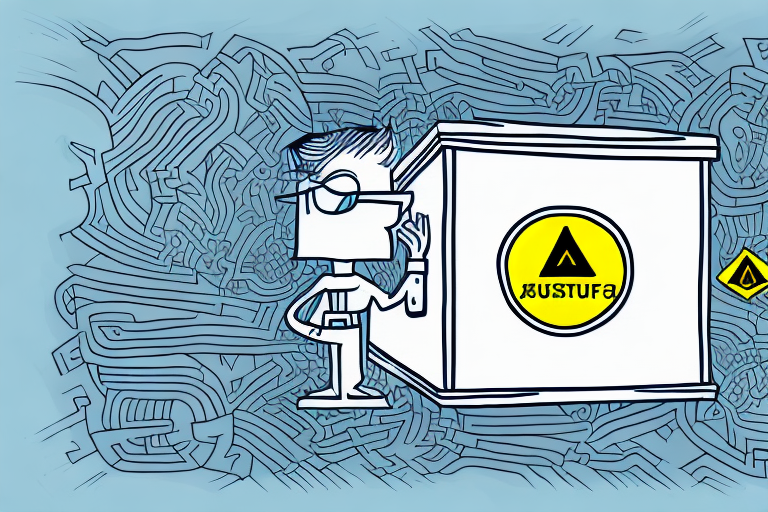In today's digital landscape, being vigilant against potential scams is crucial to safeguarding your online accounts. Amazon, being one of the largest e-commerce platforms globally, is a prime target for scammers aiming to exploit its refund and return policies. This article delves into the various Amazon refund scams, provides insights on how to recognize and prevent them, and outlines the measures Amazon is taking to protect its users.
Understanding Amazon Refund Scams
Types of Amazon Refund Scams
Scammers employ multiple strategies to manipulate Amazon's refund and return processes:
- Fake or Stolen Accounts: Fraudsters use compromised or entirely fake Amazon accounts to place orders and subsequently request refunds for non-existent or overpriced items.
- Gift Card and Prepaid Debit Card Refunds: Instead of traditional refund methods, scammers ask for refunds via gift cards or prepaid debit cards, making it challenging to trace and recover the funds.
- Phishing Emails and Fake Customer Service Calls: Scammers impersonate Amazon representatives, sending deceptive emails or making fraudulent phone calls to extract personal information like login credentials and credit card details.
Common Tactics Used by Scammers
Understanding the tactics used can help in identifying potential scams:
- Impersonation: Scammers often pose as Amazon customer service agents to gain trust and solicit sensitive information.
- Fake Promotions: Offers of unrealistically high discounts or promotions require users to provide personal or financial information, which is then misused.
- Counterfeit Listings: Creating fake seller accounts with products priced significantly lower than usual to lure buyers, only to deliver counterfeit or non-existent products.
Identifying Potential Scams
Signs to Look Out For
Being able to recognize the red flags associated with Amazon refund scams can prevent falling victim to them:
- Unsolicited Communications: Unexpected emails or phone calls requesting personal or financial information.
- Too Good to Be True Offers: Promotions or discounts that seem excessively generous.
- Strange Account Activity: Unfamiliar charges, orders, or refund requests on your Amazon account.
- Suspicious Links or Attachments: Emails prompting you to click on links or download attachments, which may contain malware.
Tips for Avoiding Phishing and Online Fraud
Implementing these practices can significantly reduce the risk of falling prey to online scams:
- Verify the Source: Always check the sender's email address or caller ID to confirm legitimacy. Official Amazon communications will come from authorized channels.
- Avoid Clicking Unverified Links: Instead of clicking links in emails, navigate directly to Amazon's official website.
- Use Secure Payment Methods: Stick to Amazon's recommended payment methods to ensure transactions are protected.
- Keep Software Updated: Regularly update your operating system, browsers, and antivirus software to protect against vulnerabilities.
Protecting Your Amazon Account
Best Practices for Securing Your Account
Adopting these security measures can enhance the protection of your Amazon account:
- Use Strong, Unique Passwords: Create complex passwords that are difficult to guess and avoid reusing them across multiple platforms.
- Enable Two-Factor Authentication (2FA): Adding an extra layer of security ensures that even if your password is compromised, unauthorized access is prevented.
- Limit Third-Party Access: Be cautious when granting permissions to third-party apps or services connected to your Amazon account.
- Regularly Monitor Your Account: Frequently review your account activity for any unauthorized actions or discrepancies.
Importance of Regularly Checking Your Account
Consistently monitoring your Amazon account can help in the early detection of fraudulent activities:
- Detect Unauthorized Transactions: Spotting unfamiliar charges or refund requests promptly can mitigate potential losses.
- Ensure Accurate Personal Information: Keeping your shipping address, payment methods, and contact details up-to-date prevents delays and unauthorized access.
- Review Order History: Verifying your purchase history ensures that all transactions are legitimate.
Amazon's Efforts to Combat Refund Scams
Amazon has implemented a range of security measures aimed at protecting its users from fraudulent activities:
- Two-Factor Authentication: Strengthens account security by requiring a second form of verification during login.
- Machine Learning and Data Analysis: Utilizes advanced algorithms to detect and prevent potential fraud in real-time.
- Project Zero: Empowers brands to remove counterfeit listings directly from Amazon's marketplace, enhancing the integrity of product listings.
- Collaboration with Law Enforcement: Partners with authorities to take legal actions against scammers and counterfeiters.
For more information on Amazon's security measures, visit their official security page.
Reporting Scams and Understanding Your Rights
How to Report Suspected Scams
If you believe you've encountered an Amazon refund scam, take the following steps immediately:
- Contact Amazon Support: Use the official Amazon contact page to report suspicious activities.
- Report to the FTC: File a complaint with the Federal Trade Commission (FTC) to help authorities track and combat fraud.
- Inform Your Financial Institution: Notify your bank or credit card company to monitor and secure your accounts.
- Report to Local Law Enforcement: In cases involving significant financial loss, consider filing a report with your local police department.
Your Rights as an Amazon Customer
As an Amazon user, you are entitled to various protections and resources in the event of fraudulent activities:
- Refund and Return Policies: Amazon offers comprehensive policies that allow customers to return faulty or unwanted products within specified timeframes.
- Account Protection: With features like 2FA and secure login protocols, Amazon ensures that user accounts remain safeguarded against unauthorized access.
- Customer Support: Dedicated teams are available to assist users in resolving issues related to scams and fraudulent activities.
- Financial Protections: Amazon's billing support can help address unauthorized charges and facilitate refunds where applicable.
Conclusion
While Amazon provides a convenient and secure platform for online shopping, it's essential to remain vigilant against potential refund scams and fraudulent activities. By understanding the various types of scams, recognizing the warning signs, implementing robust security measures, and taking advantage of Amazon's protective features, you can significantly reduce the risk of falling victim to these deceitful practices. Stay informed and proactive to ensure a safe and positive shopping experience on Amazon and other online platforms.
Remember, Amazon continually enhances its security protocols to protect its users. Staying updated with these measures and practicing good online hygiene are your best defenses against evolving threats in the digital marketplace.




















